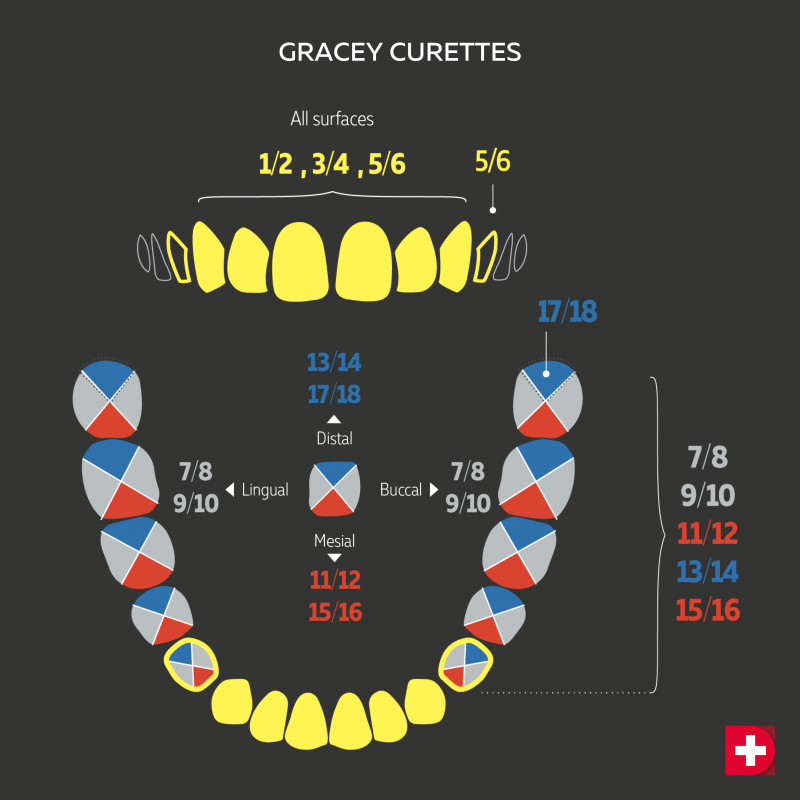
Why Our Prices are so LOW for Dental Instrument? Still Reliable?
Prices are 5 Times Cheaper Than Competitors – Are still reliable? Have you ever wondered why our dental instruments are

Dental curettes are essential tools in the field of dentistry, especially in periodontics and oral surgery. We can say this more confidently as after extracting forceps, many times we receive orders with scalers being the 2nd most bought items. These instruments are primarily used for scaling, root planning, and debridement, which are crucial for treating periodontal diseases and preparing a tooth for a restoration. The two main types of dental curettes—Universal Curettes and Gracey Curettes—serve distinct purposes. Though we also have a bit about Serrated Surgical Curettes in this blog below.
They two are chosen based on the specific requirements of the procedure, dentist preference, the patient’s condition, and many other things. Lets explores these tools, focusing on their types, uses, and the key differences between them.
Universal Curettes are designed to adapt to all teeth surfaces in all areas of the mouth. On the other hand, Gracey Curettes, also called area-specific curette, are designed for precise areas of the mouth. Each Gracey Curette is aimed for specific teeth.

Description and Design: Universal curettes have a rounded back, two cutting edges, and a rounded toe. The design is such that each curette can be used on all surfaces of all teeth without needing to change the working tip. This versatility makes them a staple in dental practice. The most commonly known universal curette is the Barnhart 5-6. More broadly, Barnhart, Columbia, and Younger-Good all are also popular. Universal curettes are known for their ability to adapt to multiple areas with minimal need for instrument changes.
Uses: The primary use of universal curettes is for subgingival and supragingival scaling. They are adept at removing small and medium-sized calculus deposits. Due to their rounded tip, they are less likely to cause trauma to the gingival tissues.
Types: Main types include Langer Curettes, Barnhart Curettes, Columbia Curettes, Standard Curettes
Langer Curettes have the shank design of a Gracey Curette combined with a universal blade. The advantage of this combination is an area-specific Gracey shank with the flexibility of a universal blade. This allows adaptation to mesial and distal surfaces without changing instruments.

Barnhart Curettes are for light to moderate deposits.
Standard Universal Curettes are best used for removing Light or moderate-sized calculus deposits supra- and subgingival.
Columbia Curettes are for light to moderate calculus. These are available in 3 designs: the 2R/2L which is primarily for anterior teeth, the 4R/4L for posterior teeth, and the 13/14 which has universal applications. The Columbia 13/14 is also available with a rigid shank.
Gracey curettes are made in 9 numbers. Each number is designed differently, aimed for a specific area of the mouth and specific surface of the teeth.
Below image courtesy to Deppeler

The distinction between two Gracey curettes designed for identical areas and surfaces lies in the configuration of their shank and the dimensions of their working end. The selection by a dentist or dental hygienist is influenced by ergonomic considerations, functionality, and personal preference.
For example, the Gracey 5/6 offers an improved wrist position compared to the Gracey 3/4 and affords deeper access to periodontal pockets than the Gracey 1/2. The Gracey 7/8 is designed for enhanced comfort, benefiting both the practitioner and the patient over the Gracey 9/10.
Similarly, the Gracey 11/12 is generally more maneuverable than the Gracey 15/16. The Gracey 17/18 is specifically advantageous for reaching the last molars, making it a vital complement to the Gracey 13/14, which is suitable for broader applications.

Description and Design: Serrated surgical curettes differ from their universal counterparts in that they feature serrated edges. These edges are designed to grip and remove granulation tissue from extraction sockets and other periodontal pockets. The serration allows for a more aggressive approach to tissue removal without exerting excessive force, which can be particularly useful in surgical settings.
Uses: Serrated surgical curettes are primarily used in oral surgery. They are ideal for cleaning and scraping bone, removing diseased tissue, cysts, and other debris from tooth sockets. Their design allows for precision in surgical debridement, helping to prepare the site for further treatment or healing.
1. Procedure Type:
2. Precision Needs:
3. Patient Considerations:
Other & Used Recourses:
About Fedior
Fedior is a dental instruments manufacturing and distributing company, which tries not to involve distributors inside its supply chain to keep the cost low for end-customer. Fedior’s products can be bought directly from its website fedior.com where you are reading this blog post.

Prices are 5 Times Cheaper Than Competitors – Are still reliable? Have you ever wondered why our dental instruments are

Dental curettes are essential tools in the field of dentistry, especially in periodontics and oral surgery. We can say this
WhatsApp us